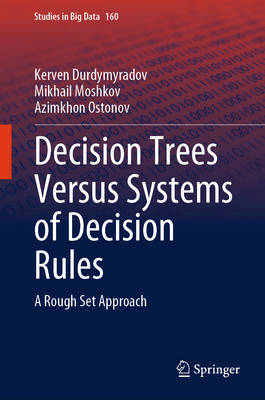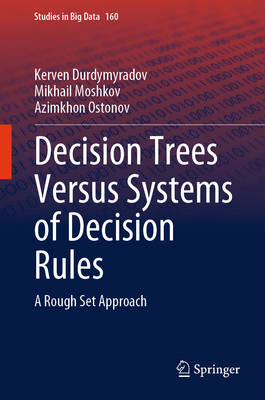
- Retrait gratuit dans votre magasin Club
- 7.000.000 titres dans notre catalogue
- Payer en toute sécurité
- Toujours un magasin près de chez vous
- Retrait gratuit dans votre magasin Club
- 7.000.0000 titres dans notre catalogue
- Payer en toute sécurité
- Toujours un magasin près de chez vous
Decision Trees Versus Systems of Decision Rules
A Rough Set Approach
Kerven Durdymyradov, Mikhail Moshkov, Azimkhon OstonovDescription
This book explores, within the framework of rough set theory, the complexity of decision trees and decision rule systems and the relationships between them for problems over information systems, for decision tables from closed classes, and for problems involving formal languages. Decision trees and systems of decision rules are widely used as means of representing knowledge, as classifiers that predict decisions for new objects, as well as algorithms for solving various problems of fault diagnosis, combinatorial optimization, etc. Decision trees and systems of decision rules are among the most interpretable models of knowledge representation and classification. Investigating the relationships between these two models is an important task in computer science.
The possibilities of transforming decision rule systems into decision trees are being studied in detail. The results are useful for researchers using decision trees and decision rule systems in data analysis, especially in rough set theory, logical analysis of data, and test theory. This book is also used to create courses for graduate students.
Spécifications
Parties prenantes
- Auteur(s) :
- Editeur:
Contenu
- Nombre de pages :
- 307
- Langue:
- Anglais
- Collection :
- Tome:
- n° 160
Caractéristiques
- EAN:
- 9783031715853
- Date de parution :
- 24-12-24
- Format:
- Livre relié
- Format numérique:
- Genaaid
- Dimensions :
- 156 mm x 234 mm
- Poids :
- 630 g

Les avis
Nous publions uniquement les avis qui respectent les conditions requises. Consultez nos conditions pour les avis.






